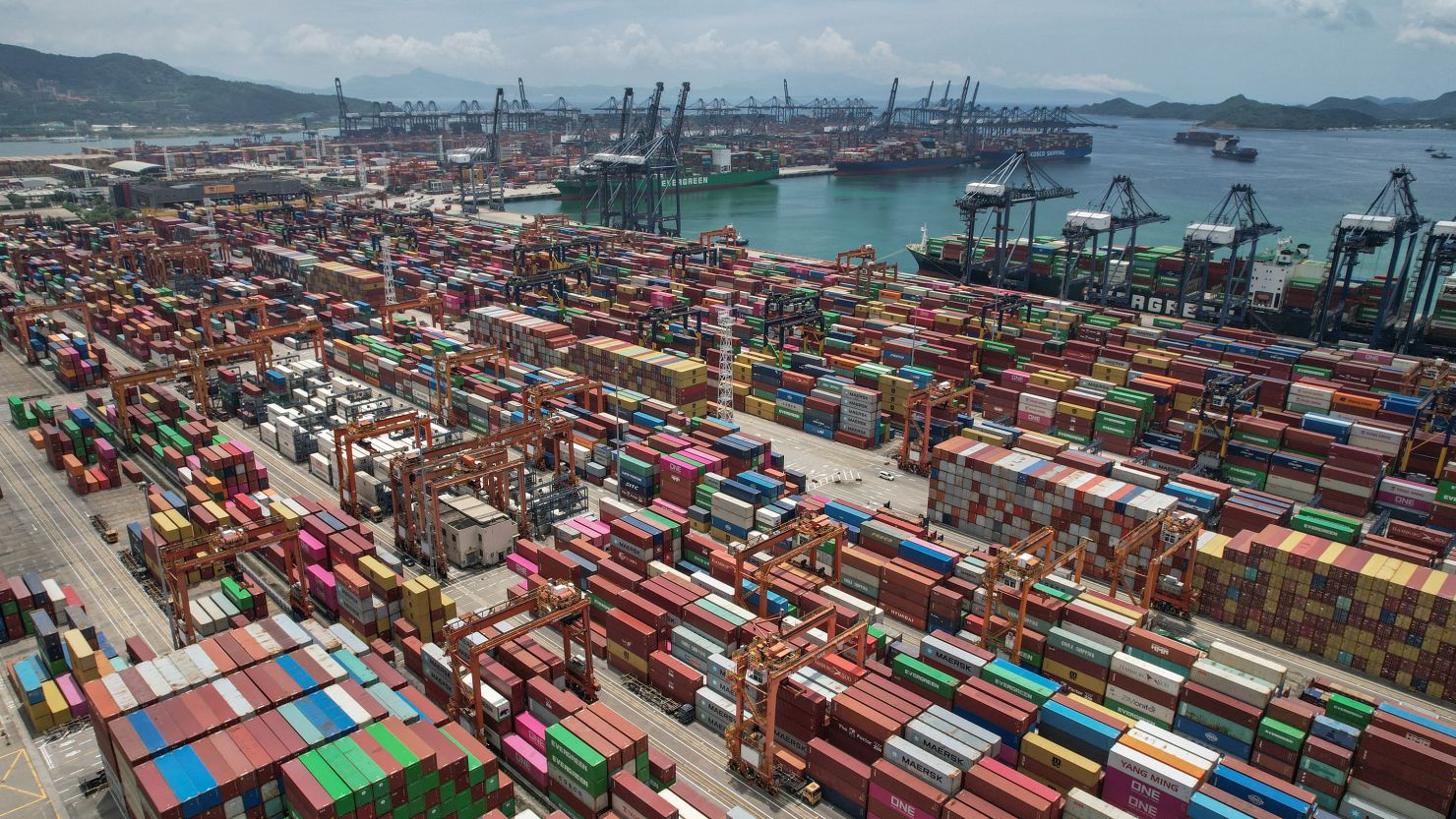Europe And The Trump Tariffs: Assessing The Economic Impact

Table of Contents
The Sectors Most Affected by Trump Tariffs
The Trump administration's tariffs, particularly those targeting steel, aluminum, and agricultural products, significantly impacted several key European sectors.
Automotive Industry
The automotive industry was severely hit by the tariffs. European car manufacturers exporting to the US faced:
- Increased production costs: Tariffs raised the price of imported components and finished vehicles, reducing profit margins.
- Reduced competitiveness: Higher prices made European cars less competitive against domestically produced vehicles in the US market.
- Job losses: Reduced exports led to factory closures and job losses within the European automotive sector. The impact was particularly felt in Germany, a major car manufacturing hub.
- Retaliatory tariffs: The EU responded with its own tariffs on US goods, further escalating the trade war and impacting both sides.
For example, data from the European Automobile Manufacturers' Association (ACEA) showed a significant decline in European car exports to the US during this period, resulting in billions of euros in lost revenue for major automakers like BMW, Mercedes-Benz, and Volkswagen.
Agricultural Products
European agricultural exports also suffered considerably. Products like cheese, wine, and fruits faced:
- Price increases: Tariffs increased the cost of these goods for US consumers, reducing demand.
- Market share losses: European producers lost market share to competitors from other regions less affected by the tariffs.
- Impact on farmers' incomes: Reduced export volumes and lower prices significantly impacted the income of European farmers, leading to calls for government support.
- Government support measures: The EU implemented various support measures to mitigate the impact on its agricultural sector, including subsidies and market intervention programs.
Specific regions known for their wine production, such as France, and cheese production, such as Italy, experienced particularly sharp declines in US exports.
Steel and Aluminum Industries
The tariffs on steel and aluminum imposed significant challenges for European producers:
- Price volatility: The imposition of tariffs created price volatility in the global steel and aluminum markets, making it difficult for European producers to plan and compete.
- Reduced competitiveness: Higher tariffs made European steel and aluminum less competitive in the US market.
- Potential for plant closures: Several European steel and aluminum plants faced the threat of closure due to reduced demand and profitability.
- Trade disputes: The tariffs exacerbated existing trade disputes between the EU and the US, leading to further tensions and negotiations.
The EU responded to these tariffs through various channels, including initiating World Trade Organization (WTO) dispute settlement procedures and imposing its own retaliatory tariffs.
Economic Consequences for the European Union
The Trump tariffs had broad economic consequences for the EU:
GDP Growth
Economic studies suggest that the Trump tariffs contributed to a slowdown in EU GDP growth. This was due to:
- Slowdown in economic activity: Reduced exports and increased uncertainty dampened economic activity across several sectors.
- Reduced investment: Businesses were less likely to invest in expansion or new projects due to the uncertainty created by the trade war.
- Job creation challenges: The slowdown in economic activity hindered job creation and exacerbated existing unemployment challenges.
Several independent economic analyses estimated the negative impact on EU GDP growth, although the exact figures varied depending on the methodology used.
Inflation and Consumer Prices
The tariffs contributed to increased prices for European consumers:
- Increased prices for imported goods: Tariffs directly increased the price of imported goods from the US, reducing consumer purchasing power.
- Reduced purchasing power: Higher prices for imported goods, coupled with a slowdown in economic activity, reduced overall consumer spending.
- Impact on inflation rates: The increased prices contributed to higher inflation rates in the EU, particularly affecting low-income households.
Data from Eurostat, the EU's statistical office, showed a discernible increase in the price of several imported goods following the imposition of the tariffs.
Trade Relations with the US
The Trump tariffs significantly strained transatlantic trade relations, resulting in:
- Strained relationships: The trade war fueled tensions and mistrust between the EU and the US, undermining decades of cooperation.
- Increased protectionism: The tariffs fueled a broader trend towards protectionism on both sides of the Atlantic, harming global trade and economic growth.
- Potential for future trade conflicts: The experience of the Trump tariffs raised concerns about the potential for future trade conflicts between the EU and the US.
The long-term implications for transatlantic relations remain a subject of ongoing debate and analysis.
The EU's Response to the Trump Tariffs
The EU responded to the Trump tariffs through several strategies:
Retaliatory Tariffs
The EU imposed retaliatory tariffs on a range of US goods, including:
- Specific products targeted: The EU targeted products with significant economic importance to the US, aiming to exert pressure and encourage negotiations.
- Economic impact of retaliatory tariffs: While the impact of these retaliatory tariffs was less severe than the initial US tariffs, they still disrupted trade and contributed to economic uncertainty.
- Effectiveness of the response: The effectiveness of the EU's retaliatory tariffs in achieving its objectives remains a subject of debate.
The EU's countermeasures were intended to protect its industries and send a clear message about its commitment to fair trade.
Strengthening Trade Alliances
In response to the uncertainty created by the Trump tariffs, the EU intensified its efforts to strengthen trade ties with other countries:
- New trade agreements: The EU actively pursued new trade agreements with countries outside the US, seeking to diversify its export markets.
- Diversification of export markets: The EU aimed to reduce its reliance on the US market by expanding trade with countries such as China, Canada, and Japan.
- Reduced reliance on the US market: By diversifying its trade relationships, the EU sought to reduce its vulnerability to future trade conflicts with the US.
These efforts reflect the EU's determination to build a more resilient and diversified trade network.
Conclusion
The Trump tariffs had a significant and multifaceted impact on the European economy. Various sectors, including the automotive, agricultural, and steel industries, experienced substantial losses. The EU's overall GDP growth was negatively affected, inflation rose, and trade relations with the US suffered. The EU's response, which included retaliatory tariffs and efforts to strengthen trade alliances, aimed to mitigate the negative consequences. Understanding the lasting impact of Europe and the Trump Tariffs requires continued analysis. Further research into the long-term economic effects and policy responses is crucial.

Featured Posts
-
 To Mellon Tis Black Widow Meta Tin Skarlet Gioxanson
May 13, 2025
To Mellon Tis Black Widow Meta Tin Skarlet Gioxanson
May 13, 2025 -
 Eurovision 2025 Sissal Repraesenterer Danmark
May 13, 2025
Eurovision 2025 Sissal Repraesenterer Danmark
May 13, 2025 -
 Eva Longorias Lavish 50th Birthday Party Miami Friends And Famous Faces
May 13, 2025
Eva Longorias Lavish 50th Birthday Party Miami Friends And Famous Faces
May 13, 2025 -
 Oregon Ducks Secure Top Aussie Talent Kelly Graves Latest Recruit
May 13, 2025
Oregon Ducks Secure Top Aussie Talent Kelly Graves Latest Recruit
May 13, 2025 -
 Hikmah Dari Pendekatan Sby Dalam Menghadapi Krisis Myanmar
May 13, 2025
Hikmah Dari Pendekatan Sby Dalam Menghadapi Krisis Myanmar
May 13, 2025
